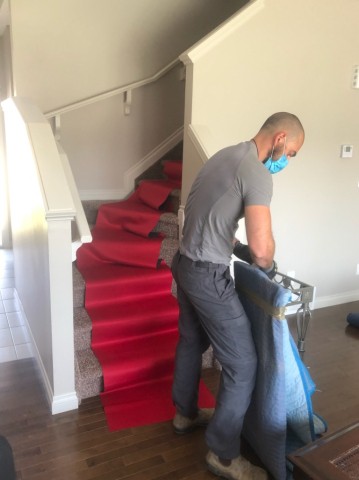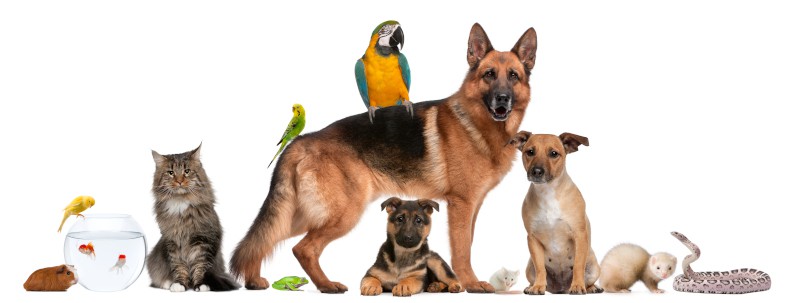Relocating can be a tumultuous experience, and it’s pivotal to remember that our pets share in this stress. This comprehensive guide offers practical advice to ease our furry, feathered, or scaly friends into their new surroundings.
Understanding Your Pet’s Perspective
Imagine yourself as your pet: Routine and familiarity anchor their world, and a move disrupts both. Pets may be puzzled by unfamiliar faces, the sudden swarm of boxes, and the frenzied activity. Recognizing this can help you empathize with your pet, providing the reassurance they need.
Pet-Specific Considerations and Steps for Transition
Each pet is unique, responding differently to a move. We delve into some specific guidelines:
Canine Companions:
- Pre-Move Familiarization: Start by taking your dog for visits to the new neighborhood, if possible, to familiarize them with the new smells and sights.
- Maintain Routine: Try to stick to their usual walking and feeding schedule amidst the chaos of packing and moving.
- Provide a Safe Space: During the move, arrange a quiet and secure area for them away from the frenzy.
- Reassurance and Affection: Shower them with extra love and reassurance during this time.
- Gradual Introduction: Once in the new home, allow them to explore one room at a time while you unpack, ensuring they feel safe and secure.
Feline Friends:
- Safe Space During Packing: While packing, assign a quiet room for your cat with their bed, litter box, food, and water.
- Familiarize With Carrier: If they aren’t used to a carrier, gradually familiarize them with it, using treats and toys.
- Transition With Familiar Items: When in the new home, create a secure area with their favorite toys, bedding, and some used clothing items with your scent.
- Explore at Own Pace: Let them explore the new house at their pace, making sure windows and external doors are closed during this initial exploration phase.
Reptile Residents:
- Stable Environment: Keep the terrarium environment stable during the move, ensuring the temperature is consistent.
- Secure Transportation: Use secure and comfortable transportation containers to move them.
- Check Setup: Once at the new house, check the terrarium setup before introducing the reptile.
- Monitor: Monitor your reptile carefully for the first few days for any signs of stress.
Small Mammal Movers:
- Maintain Comfort: Move small mammals in their cages if possible to maintain comfort and familiarity.
- Quiet Environment: Ensure a serene, secure, and temperature-controlled environment during the move.
- Monitor Health: Keep a close eye on their behavior and health following the move, as these animals can be sensitive to change.
Birds:
- Covered Cage: During the move, keep the bird’s cage covered to alleviate visual stress.
- Consistent Routine: Try to maintain their routine as closely as possible throughout the move.
- Gradual Adjustment: Once in the new house, allow them to adjust to their new surroundings gradually.
- Monitor Health: Monitor for any changes in behavior, appetite, or droppings.
Aquatic Animals:
- Temporary Tank: Prepare a temporary tank for the move with water from the existing tank.
- Preserve Existing Water: If possible, save as much of the water from the original tank to set up in the new home to minimize the shock.
- Slow Acclimatization: Once at the new house, gradually introduce the fish to the new tank setup to avoid sudden changes in temperature or water conditions.
- Monitor Health: Keep a close eye on the fish’s behavior for the first few days to ensure they’re adjusting well.
Preparation Before the Move
Introduce packing materials and boxes into your living space gradually. This process helps pets adjust to the idea of moving. Preserve their routine as much as possible and offer an abundance of attention and comfort.
The Vet Visit
Schedule a health check-up with your vet before moving to ensure your pet is in good condition for the journey. It’s also an excellent time to collect necessary medications and your pet’s medical records.
Traveling to the New Home
Each pet is distinct, and the best method of moving them will depend on their species, temperament, and the move’s distance. Pack a bag with essential items like food, toys, and other comfort items, regardless of your pet’s type.
Arriving at the New Home
Once you arrive, create a comforting space for your pet with their bed, toys, and other familiar items. Allow them to explore their new surroundings at their pace and offer patience as they acclimatize.
Settling In
In the weeks following the move, maintain their routine and provide plenty of love and attention to help your pet adjust. Watch for stress signs, and if they persist, consult your vet.
Navigating the Move Together
Moving is a stressful event for everyone involved, including your pets. But with detailed preparation, patience, understanding, and a little extra TLC, you can ensure a smooth transition for all family members. Here’s to successfully settling into your new home with your pet!
Author
Mikhail, also known as Michael, is the owner of M&M Best Movers. He was inspired by his family’s experience in the moving business and decided to start his own company in Edmonton. With over 20 years of experience, Mikhail and his team work hard to make moving stress-free for their customers by handling their belongings with care and ensuring a smooth moving process.


